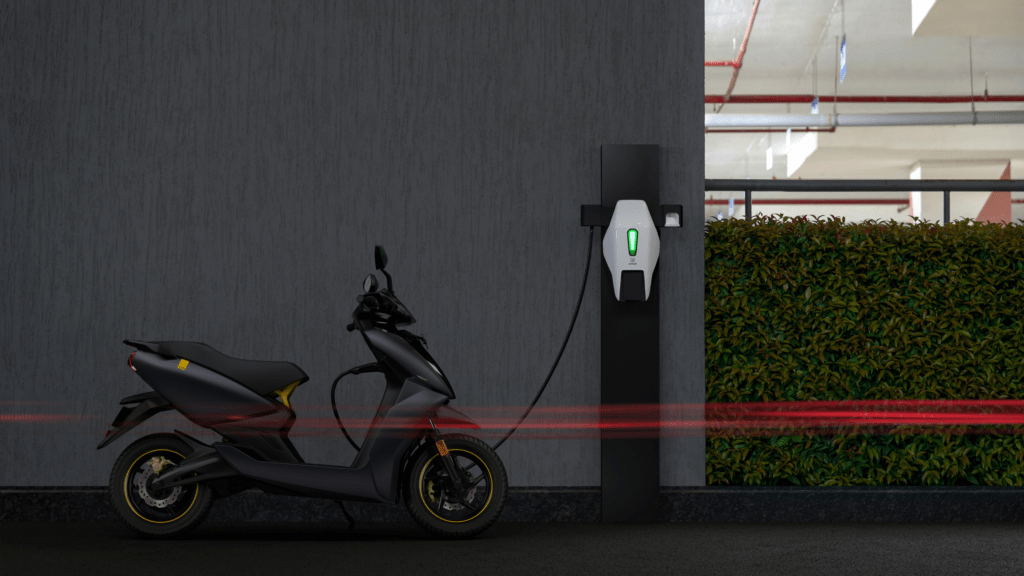Introduction
Electric two-wheelers have surged in popularity as a sustainable alternative to traditional gasoline-powered vehicles. These eco-friendly machines offer a cleaner, quieter, and more efficient mode of transportation. However, their adoption is often marred by one persistent issue: electric bike battery drain. Understanding the myriad factors contributing to this problem is crucial for both manufacturers and consumers aiming to maximize battery longevity and efficiency.
Inherent Design Flaws
Manufacturing Inconsistencies: Electric two-wheelers are subject to inconsistencies during manufacturing that can lead to premature electric bike battery drain. Variations in the assembly process and discrepancies in component quality can significantly impact battery performance. For instance, slight deviations in the alignment of battery cells or improper sealing can create vulnerabilities that accelerate degradation.
Material Quality: The materials used in battery production, such as lithium-ion cells, must meet high standards. Inferior materials can degrade faster, reducing the battery’s ability to hold a charge. The purity of the lithium and the quality of other components like separators and electrolytes play a crucial role in determining the battery’s lifespan and resistance to drain.
Environmental Factors
Temperature Extremes: Batteries in electric two-wheelers are highly sensitive to temperature. Extreme heat can accelerate chemical reactions inside the battery, leading to quicker degradation, while cold can slow down these reactions, reducing efficiency. For instance, riding an electric bike in a hot climate can cause the battery to overheat, leading to a significant electric bike battery drain. Conversely, in cold climates, the battery’s performance can drop sharply, affecting the vehicle’s range and reliability.
Humidity and Moisture: Exposure to high humidity and moisture can cause corrosion and other damage to battery components. This environmental stress can significantly shorten battery life. Electric bike battery drain is often exacerbated in regions with high rainfall or coastal areas where saltwater can contribute to corrosion.
Usage Patterns
Frequent Short Trips: Electric two-wheelers used for short, frequent trips often experience higher battery drain. Short trips do not allow the battery to reach optimal operating temperatures, which can lead to inefficiencies. When the battery is consistently used in a suboptimal temperature range, it can result in an accelerated electric bike battery drain, reducing the overall lifespan of the battery.
High-Speed Travel: Consistently traveling at high speeds demands more power from the battery, leading to faster depletion. This usage pattern strains the battery beyond its typical operating conditions. Electric bike battery drain is more pronounced when the vehicle is frequently pushed to its speed limits, as this requires the battery to deliver high bursts of power, which can cause it to heat up and degrade faster.
Charging Habits
Overcharging Issues: Overcharging is a common problem that can damage the battery cells. Leaving the vehicle plugged in beyond full charge cycles can cause the battery to overheat and degrade more quickly. Electric bike battery drain can be significantly mitigated by adhering to recommended charging practices and avoiding leaving the battery connected to the charger for extended periods.
Inconsistent Charging Practices: Inconsistent charging habits, such as frequently topping off the battery instead of allowing it to charge fully, can contribute to uneven cell wear and reduced overall battery life. Electric bike battery drain can be managed more effectively by following a consistent charging routine, allowing the battery to cycle fully and maintain balanced cell performance.
Battery Age and Degradation
Natural Wear and Tear: All batteries experience natural degradation over time. With each charge cycle, the battery’s capacity diminishes slightly, leading to a gradual reduction in performance. This inevitable process contributes to electric bike battery drain, making it essential for users to understand the expected lifespan of their batteries and plan for replacements as needed.
Impact of Usage Over Time: Prolonged use of an electric two-wheeler will inevitably lead to battery wear. This is a normal part of the battery’s life cycle but can be managed with proper care and usage. Monitoring battery health and adjusting usage patterns can help mitigate electric bike battery drain and extend the battery’s effective lifespan.
Electrical System Strain
Accessory Load: Additional accessories, such as GPS devices, lights, and speakers, place extra demand on the battery. This additional load can lead to faster depletion and reduced battery life. Electric bike battery drain is often more pronounced in vehicles equipped with multiple power-hungry accessories, necessitating careful management of these add-ons to preserve battery health.
Software Malfunctions: Faulty or outdated software can cause improper battery management. Issues like unoptimized power distribution and parasitic drain can significantly affect battery health. Regular software updates and diagnostic checks can help identify and resolve issues contributing to electric bike battery drain, ensuring the vehicle operates efficiently.
Maintenance Neglect
Lack of Regular Check-ups: Regular maintenance is crucial for battery health. Neglecting periodic check-ups can lead to undetected issues that exacerbate battery drain. Routine inspections can help identify potential problems early, allowing for timely interventions to prevent severe electric bike battery drain.
Improper Storage Conditions: Storing electric two-wheelers in unfavorable conditions, such as places with extreme temperatures or high humidity, can accelerate battery degradation. Proper storage practices, including keeping the vehicle in a cool, dry place and partially charging the battery during extended storage periods, can significantly reduce the risk of electric bike battery drain.
Technological Limitations
Current Battery Technology: Despite advancements, current battery technology has inherent limitations. Issues like energy density constraints and charge cycle efficiency are ongoing challenges. Electric bike battery drain is partly due to these technological limitations, highlighting the need for continued research and development to create more resilient and efficient batteries.
Energy Density Challenges: Higher energy density batteries can store more power but are often more sensitive to stress, leading to a trade-off between capacity and longevity. Balancing these factors is critical to minimizing electric bike battery drain while maximizing performance and range.
Manufacturing and Quality Control
Variability in Production: Differences in production quality can lead to significant disparities in battery performance. Inconsistent manufacturing processes result in batteries that may drain faster than expected. Ensuring strict quality control measures during production can help reduce the incidence of electric bike battery drain caused by manufacturing defects.
Quality Assurance Gaps: Gaps in quality assurance protocols can allow defective batteries to reach consumers. These defects often result in quicker battery drain and reduced lifespan. Implementing comprehensive testing and inspection processes can help identify and rectify issues before batteries are shipped to customers, mitigating electric bike battery drain.
Consumer Misuse
Ignoring Manufacturer Guidelines: Consumers who disregard manufacturer recommendations on charging and usage can inadvertently shorten their battery’s lifespan. Following the guidelines provided by the manufacturer is essential to minimize electric bike battery drain and ensure optimal performance.
Improper Handling: Mishandling batteries, such as dropping or exposing them to extreme conditions, can cause physical damage that accelerates drain. Educating users on proper handling techniques can help prevent incidents that lead to electric bike battery drain and extend the battery’s life.
Regulatory and Policy Issues
Lack of Standardization: The absence of standardized battery technologies and practices across the industry leads to inconsistencies in battery performance and longevity. Establishing industry-wide standards can help reduce electric bike battery drain by ensuring that all batteries meet minimum performance and safety criteria.
Inadequate Consumer Protection: Insufficient regulations to protect consumers from subpar batteries result in higher instances of premature battery drain. Strengthening consumer protection policies and enforcing stringent quality standards can help address electric bike battery drain and enhance user confidence in electric two-wheelers.
Comparative Analysis
How Other Markets Fare: Examining electric vehicle markets in other regions can provide insights into effective practices for battery management and longevity. Countries with robust electric vehicle adoption often have advanced infrastructure and regulatory frameworks that help mitigate electric bike battery drain.
Lessons from the Automotive Industry: The automotive industry’s experience with electric vehicles offers valuable lessons on battery technology and maintenance. Applying these lessons to electric two-wheelers can help address electric bike battery drain and improve overall vehicle reliability.
Solutions and Innovations
Emerging Battery Technologies: Advances in battery technology, such as solid-state batteries, promise to address many current limitations and improve longevity. These new technologies offer higher energy densities, faster charging times, and greater resilience to stress, potentially reducing electric bike battery drain significantly.
Best Practices for Users: Educating consumers on optimal charging habits, maintenance, and usage can significantly enhance battery life. Simple steps, such as avoiding overcharging, storing the vehicle properly, and adhering to recommended charging cycles, can help reduce electric bike battery drain and prolong the battery’s effective lifespan.
Future Outlook
Industry Trends: The electric two-wheeler market is evolving, with ongoing research aimed at overcoming current battery challenges and improving performance. Trends such as the development of more efficient battery chemistries and the integration of smart battery management systems are expected to mitigate electric bike battery drain.
Anticipated Technological Advances: Future innovations in battery technology hold the potential to revolutionize electric two-wheeler performance and reliability. Advances in materials science, manufacturing processes, and energy management technologies are anticipated to address many of the factors contributing to electric bike battery drain, paving the way for longer-lasting, more efficient batteries.

Conclusion
Understanding the key reasons behind electric bike battery drain in electric two-wheelers is essential for addressing this prevalent issue. By recognizing the various contributing factors and implementing best practices, manufacturers and consumers can work together to extend battery life and improve the overall sustainability of electric transportation. As the industry continues to evolve and innovate, addressing these challenges will be crucial in ensuring the long-term success and adoption of electric two-wheelers.
For more content follow Humstory













